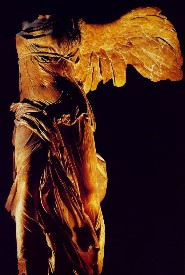 SIGNS OF SOME-THING ELSE / V
SIGNS OF SOME-THING ELSE / V

"A wind that blows from the abyss above us
among our brethren who one time existed
ripples and shakes the surface of our spirits,
and, reflected upon this trembling mirror,
the world, too, trembles."
--Miguel de Unamuno (1920)
[...]
CHRIS MARKER / NOTES
Description without place – “This is not a description which locates its content in a historical space and time, but a description which creates, as the background of the phenomena it describes, an inexistent (virtual) space of its own, so that what appears in it is not an appearance sustained by the depth of reality behind it, but a decontextualised appearance, an appearance which fully coincides with real being.” -- Slavoj Zizek, “The Tyrant’s Bloody Robe”, in Violence (New York: Picador, 2008), pp. 5-6.
Chris Marker, now 87 years old, has sustained a distinguished career plumbing the depths of photography and cinema, but his first projects were in fact travel books for Seuil, a series entitled Petite Planete, begun in 1954, featuring a photo of a woman on the covers characterizing the country presented in the text. A savant's Baedeker, perhaps.
Marker's photographic oeuvre, while spanning decades, came to its full import, its complicated weaving of differential realities, in the 1960s with his seminal surveys, cinematic and photographic, of cultural and intersubjective forms of marking time. Foremost in this regard was La Jetée (1962), culminating with Sans Soleil (1983).
The Paris 1968 photos presented in the exhibition "Staring Back" (2007) at the Wexner Center in Columbus and at Peter Blum Gallery in New York, bear traces of Marker's digitalization of his personal archive, something that came to fruition with his multi-media CD-ROM Immemory (1998).
It is this concept of 'immemory' that carries the metaphorical weight of Marker's entire philosophy of the slippage given to images, photographic and mnemonic. Like the films of Russian maestro Andrei Tarkovsky, whom Marker made a documentary of in the mid-1980s (following Tarkovsky’s film Sacrifice, and while Tarkovsky was dying of brain cancer), it is not a matter of symbols indexing a parallel world but of an irreal dimension within artistic signs that points to the return of the Real. Any literal, historical content is ultimately lost in both, as what emerges is an internal ordering that is marked by this very immemorial (forgotten and/or half-remembered) quality that opens the space of alterity, a path to the consciousness of the other within one's own psyche, but also a path outside of mere being.
It is, then, a case for anamnesis -- for Platonic recovery of the lost and/or recondite, and for de-naturalizing memory per se toward another form of naturalization within the apparatus of cultural presence and its archival double as artistic artifact. If this is the true meaning of the idea of historicity -- as Marker's work is highly suggestive of the interweaving of political, psychic, and temporal phenomena -- it is the open and unanswerable question regarding what it means to be historical (to exist within a milieu that elides the simple configurations of being, such as 'I' or its other) that is paradoxically answered by Marker's still photography.
Paris in 1968 remains a shifting ground insofar as the causes of the revolt and its historical record are highly contested on the right and the left today. (Zizek points out in Violence that neo-liberals love Paris 1968 because it underwrites their own exuberant form of “liberal communism”, a somewhat sinister form of capitalist jouissance that carries traces of liberalism’s chronic bad conscience vis-à-vis the exploitation endemic to capitalism per se.) Marker's exquisite renderings of this revolt are not political, nor are they, today, nostalgic, while they operate nonetheless within the political and the retrospective gaze that is photography itself. Thus, there is an explicit moral dimension to the images that transcends their historical datum and forces a type of recognition of the unfathomable excess of a time and place that is wholly gone but remains as imprint or trace within the present-day order. For this reason Marker has often invented a fictional future, far and away the best means of demarcating what 'futural' means within a philosophical position that acknowledges all experience as marked by its potential to serve a redemptive caesura in the flow of time (to end time).
Marker's Rolleiflex, deployed in the streets of Paris in 1968, and the subsequent editing and digital altering of these images (making them hyper-real), plus their inclusion in the retrospective exhibitions noted above, as complex, places the personal in a register that begins to both account for the ineluctable reduction that passes through things and events as they pass into works of art, and the compounded and folded liminality of all archives (personal and otherwise), arguable a profoundly disturbing and potentially redemptive zone within cultural production, produced and substantiated as subjectivity and objectivity collide and both vanish as mutually determined and mutually contracted fatalities.
GK (DRAFT 06/12/08)
For a printable version of this essay, cliquez ici (RTF) ...
NOTES - ‘The Merciless’ = The dialectic = The not-not-rational, but not the irrational (not-rational) nor the rational (not-irrational), but what is behind the complex (beyond negations, the ‘negation of negation’), or what in the Gita is called the ‘eternally embodied one’, Nietzsche’s ‘Yes, Yes’ (double affirmation) ... Therefore, to give up all ‘yoga(s)’, to defend the archaic that only ever arrives as ‘futural’ (never arrives) ... Or, that which the Jena Romantics circled endlessly (especially Novalis), and that which Wilhelm von Humboldt found (‘Brahman’) in his humble defense of August Wilhelm von Schlegel’s Latin translation of the Gita (1823) ... Thus, negation upon negation until Some-thing Else ‘appears’ ...
"This self-contained essence may indeed also be represented as self-sufficient, in the way that Brahman's self-thinking. Brahman is the universal soul; in creating, it goes forth out of itself as a breath, it contemplates itself, and from then on it is for itself." G. W. F. Hegel, Lectures on the Philosophy of Religion (1831) ...
See Bradley L. Herling, The German Gita: Hermeneutics and Discipline in the German Reception of Indian Thought, 1778-1831 (London: Routledge, 2005)
Coda / The True (Soma)
 Image (right), The Most Famous Painting in the World? - Velázquez, 'Las Meninas' (1656) ... / Image (above), Winged Victory ...
Image (right), The Most Famous Painting in the World? - Velázquez, 'Las Meninas' (1656) ... / Image (above), Winged Victory ...POSTSCRIPT / RECYCLED POSTSCRIPT(S) / BIBLIOGRAPHIE / UPDATES
CHRIS MARKER - Bill Horrigan, et alia, Chris Marker: Staring Back (Columbus, OH: Wexner Center, 2007) / Chris Marker, La Jetée: Ciné-roman (New York: Zone Books, 1992/2008) ...
VELAZQUEZ - "It is perhaps the very greatest tour de force of western painting. In subject and execution, it is as the French philosopher Michel Foucault wrote in 1966, the representation of representation." Dawson W. Carr, "Painting and Reality: The Art and Life of Velázquez" [pp. 26-53], Dawson W. Carr, et alia, Velázquez (London: National Gallery of Art, 2006), p. 48 / See Estrella de Diego, "Representing Representation: Reading 'Las Meninas', Again" [pp. 150-169], in Suzanne L. Stratton-Pruitt (ed.), Velázquez’s 'Las Meninas' (Cambridge: Cambridge University Press, 2003) ...
TRUTH - "Truth is found behind appearances. And what is behind appearances is a great darkness. And it is that darkness that one will have to search for the truth." John Berger, "Los enanos cambian de sitio", in El retrato en el Museo del Prado (Madrid: Anaya, 1994), pp. 376-377, in Suzanne L. Stratton-Pruitt, "Velázquez’s ‘Las Meninas’" [pp. 124-149], in Suzanne L. Stratton-Pruitt (ed.), Ibid., p. 149 (trans. Suzanne L. Stratton-Pruitt) ... See Nightfall ...
The (Ir)Real Thing (Looking Awry) ...


The Editors
 THE WAY OUT? - Levinas, Marion, Chrétien (SAMIZDAT)
THE WAY OUT? - Levinas, Marion, Chrétien (SAMIZDAT)